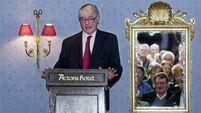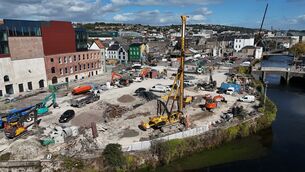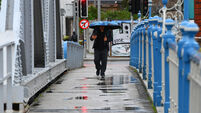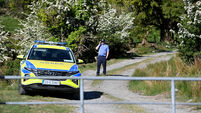Clodagh Finn: The first lady and Stem pioneer who could have been president
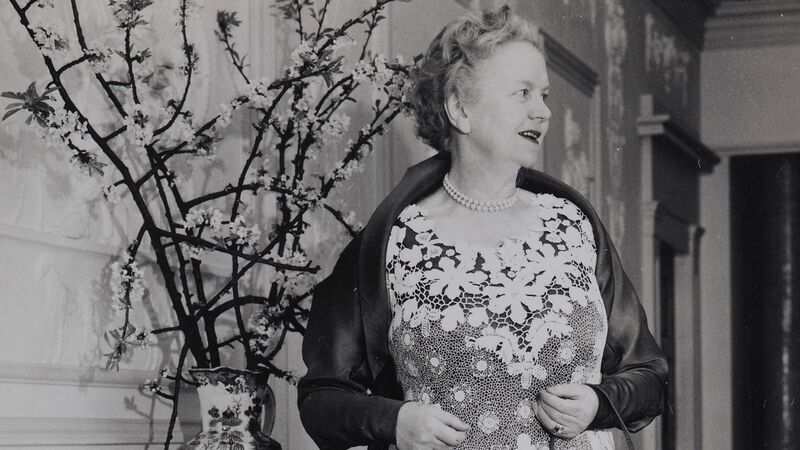
First lady Phyllis Bean Ui Cheallaigh at the White House in 1959. ‘The visit to the United States remains as a great memory with me most of all,’ she said in 1980. Picture courtesy of the National Library of Ireland
It’s a forgotten and minor detail but I wonder if any of the three presidential candidates know there was once a showpiece mahogany bath in Áras an Uachtaráin.
It was installed for Queen Victoria’s state visit in 1849 and, fitting for a monarch, I suppose, you had to climb several steps to get into it. It’s long gone now because Phyllis Ryan, the first presidential wife to take up residence in the park, got rid of it as soon as she moved in.
I’ve been reading about this formidable woman and Stem pioneer who, in 1925, hired a team of five graduate chemists — all women — to help her run her own laboratory on Dawson Street in the centre of Dublin.
She sometimes put in 24-hour days to make enough money to equip the lab so that she could win contracts as the first female public analyst in Ireland. At one point, she was analysing water, butter and milk for district health boards and more than a dozen county councils.
Phyllis Ryan had already forged a path by qualifying with a master’s degree in science from University College Dublin in 1917. She was the only woman in her year, and just the fifth female science graduate since the National University of Ireland was founded in 1908.
HISTORY HUB
If you are interested in this article then no doubt you will enjoy exploring the various history collections and content in our history hub. Check it out HERE and happy reading
As the primary school curriculum puts a new focus on Stem, teachers might tell the next generation about this woman who published several scientific papers, with Professor Hugh Ryan (no relation), more than 100 years ago.
Indeed, her life is a study in how women contributed to all spheres of public life since the foundation of the State.
Born in Wexford in February 1895, Phyllis was the youngest of Eliza and John Ryan’s high-achieving 12 children. The couple made sure all of their children went to second level and, unusual for the time, many of them – including the girls – went on to university.
Among them there were university lecturers, schoolteachers, a government minister and doctor (James Ryan), a nun and a priest.
The Ryans were also a politically active, nationalist family. Phyllis, her sister Mary Josephine (Min) and brother James were all in the GPO in 1916. Two other sisters, Mary Kate (Kit) and Nell, were arrested and jailed after the Rising.
“The air was tingling with expectancy,” Phyllis said many years later.
"There was the revival of the language to say nothing of the intriguing political situation.”
During the Rising, Phyllis and her sister were sent out into the city to deliver messages after a long night in the kitchen preparing food: “I spent the whole night cutting up bread and making sandwiches… getting very tired. I had boys coming down from the roof to be fed,” she said in a RTE radio interview in 1971.
Min was a member of Cumann na mBan and Phyllis joined in 1917, becoming Captain of the Ranelagh branch in Dublin.
A few years later, while studying to be an analyst in London, she was asked to sort out a split in Cumann na mBan there. An interesting snippet in the witness statement of Mary A Cremin tells us that Phyllis Ryan “held an inquiry” and “she fixed up matters”.
We might add negotiator to the list of achievements of this young woman who returned home to combine business and politics. Her lab on Earlsfort Terrace also served as a meeting place for IRA leaders during the War of Independence.
In recent years, women’s involvement in revolutionary politics has been slowly restored to public view. The same cannot be said of their work in the field of science.
That is starting to change, though. Just this week, the Royal Irish Academy published , tracing the work of natural philosophers, mathematicians, engineers, particle physicists, code breakers, and more, over four centuries.
Its editors Turlough O’Riordan and Jane Grimson took the unusual but welcome step of ensuring all the book’s photographs are of women to highlight their invaluable but too-often overlooked contributions.
If Phyllis Ryan’s work was later forgotten, it is striking to see that it was highly valued in her own lifetime.
She was co-founder and later president of the Irish Chemical Association, a body set up to promote chemistry and represent the profession of chemistry in Ireland.
In 1934, the government of the day appointed her to the Industrial Research Council, the only woman among its 24 members. The council, among other things, looked at the possible commercial application of seaweed, clay and peat.
It’s fascinating to see that Phyllis Ryan made notes on an article about the possibility of turning peat into briquettes, years before that became a reality, a detail recorded by Brian Trench in an article in History Ireland.
She married Seán T. O’Kelly in 1936, the man who would go on to serve as the second president of Ireland from 1945 to 1959. O’Kelly had been widowed two years before when his first wife – and Phyllis’s elder sister Mary Kate – died.
“Perhaps people did think this subsequent marriage to me a bit strange,” she said with unusual openness in an interview in 1980. “I was 43 at the time and we had been good friends since we first met. Our marriage was a natural progression.”
And, with equal candour, she spoke about not having children but her marriage was still wonderful. For a time, she continued to work under her own name but that came to an end when the couple moved to the Park in 1945.
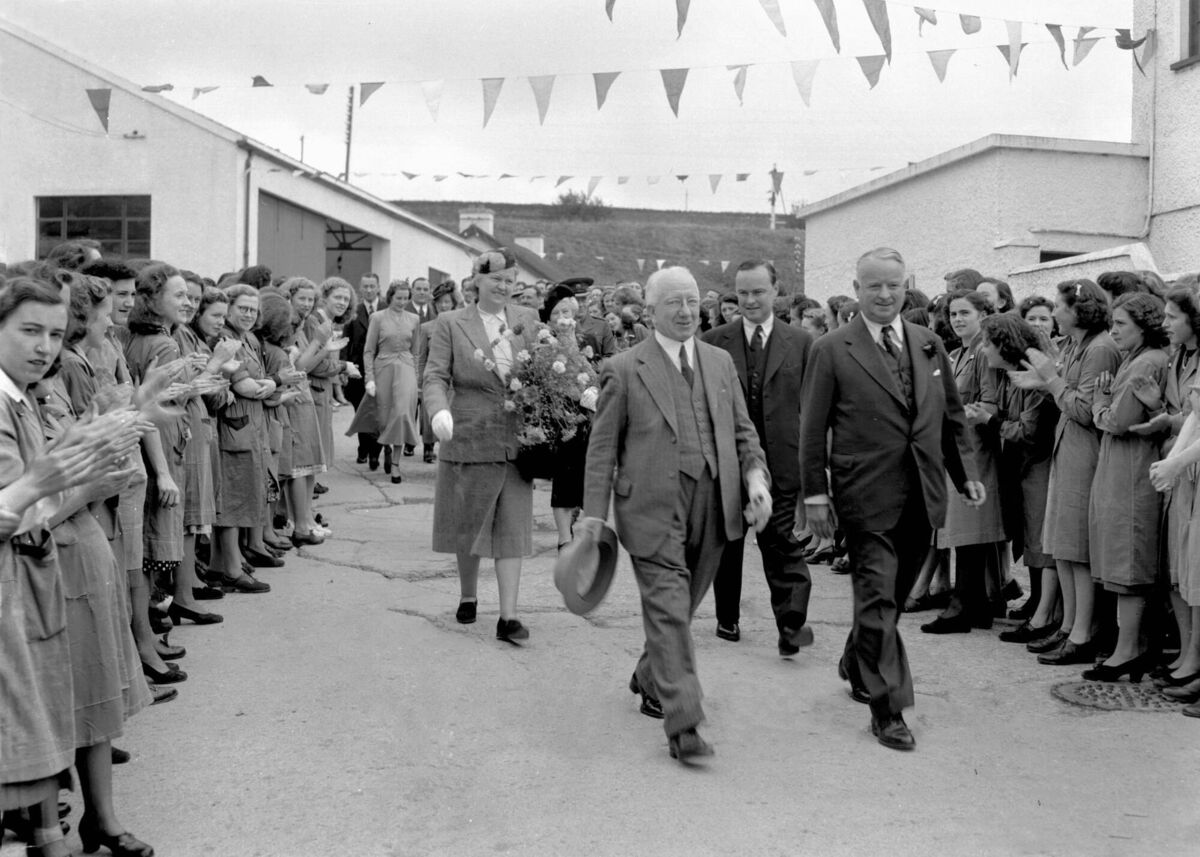
She was the first presidential wife to do so as Lucy Kurtz, wife of the first president Douglas Hyde, was too ill to move there and died in 1938.
Meanwhile, Phyllis Ryan now called herself Phyllis Bean Úi Cheallaigh and did what she could on a limited budget to spruce up the Áras. The royal bath went and she did much to cultivate trees and plants in the presidential garden.
She still had an income because she successfully re-applied for the military service pension that was denied her in 1937. It contributed to the presidential household.
Phyllis Bean Úi Cheallaigh missed her job, though.
And her absence was felt. In 1945, her all-female workforce was noted in the international journal in an article regretting that she would not be able to continue her profession now that she was First Lady.
Given her political background and her scientific achievements, she might have been president herself, although she was a reluctant inhabitant of Áras an Uachtaráin.
“I didn’t really enjoy my stay in the Park,” she said at the age of 85. “I was happy when it was all over. I had to give up my job on becoming First Lady.”
There were highs too of course. She was happy to have had the experience, she said, and the visit to the United States in 1959 remained “a great memory with me most of all”.
Her contribution to public life continued well into her 70s.
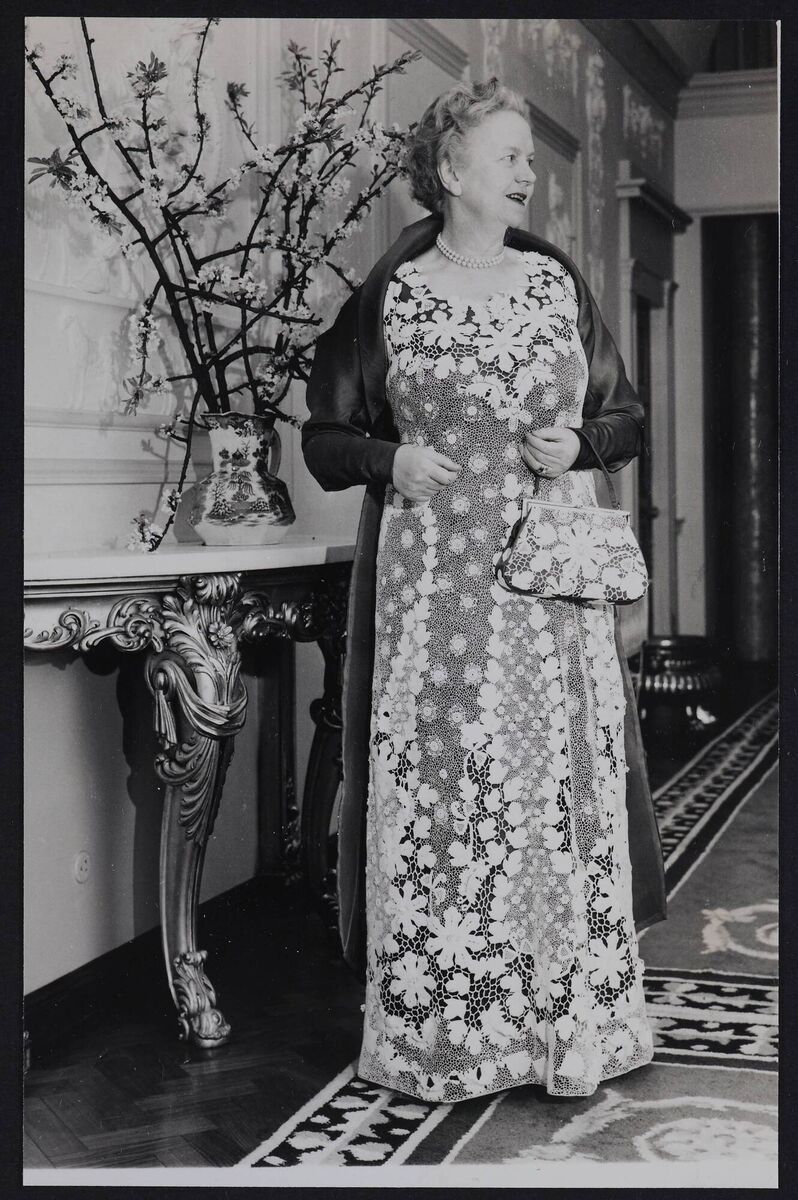
She was the only woman appointed to the RTE Authority in 1970, although the entire board was sacked two years later after the government ruled an interview with Seán MacStíofáin, IRA chief of staff, breached broadcasting legislation.
In 1980, she still made an impression: “The sheer impact of Phyllis Bean Úi Cheallaigh at 85 is remarkable.
"The gentle, serried features radiate a youthful verve that is highlighted as she recalls vivid memories.”
That was the verdict of a reporter.
It gives us a last, evocative insight into this woman who might have been president.









